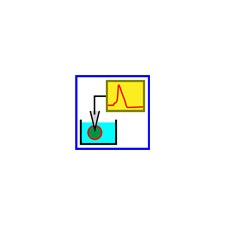
Neurosim 5
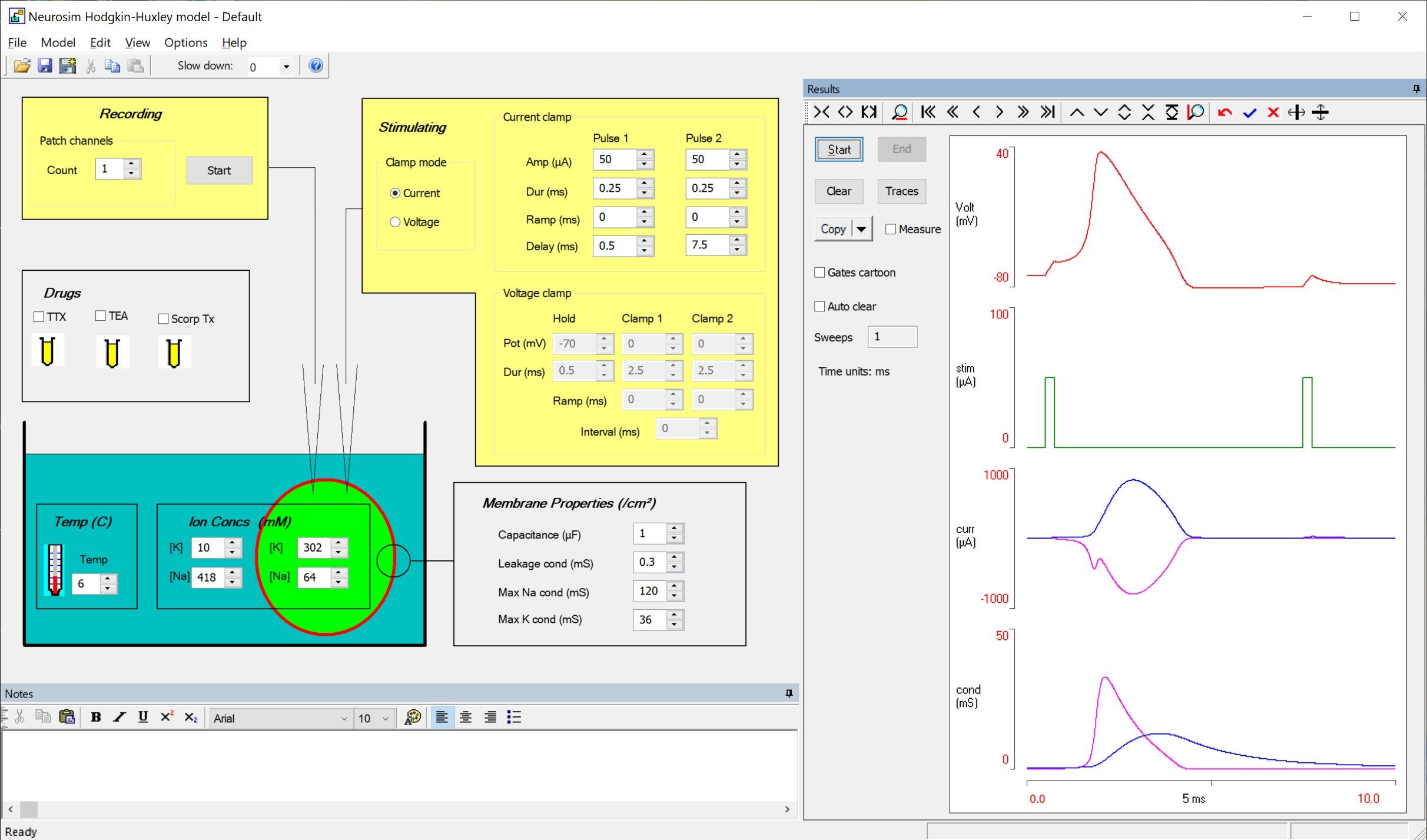
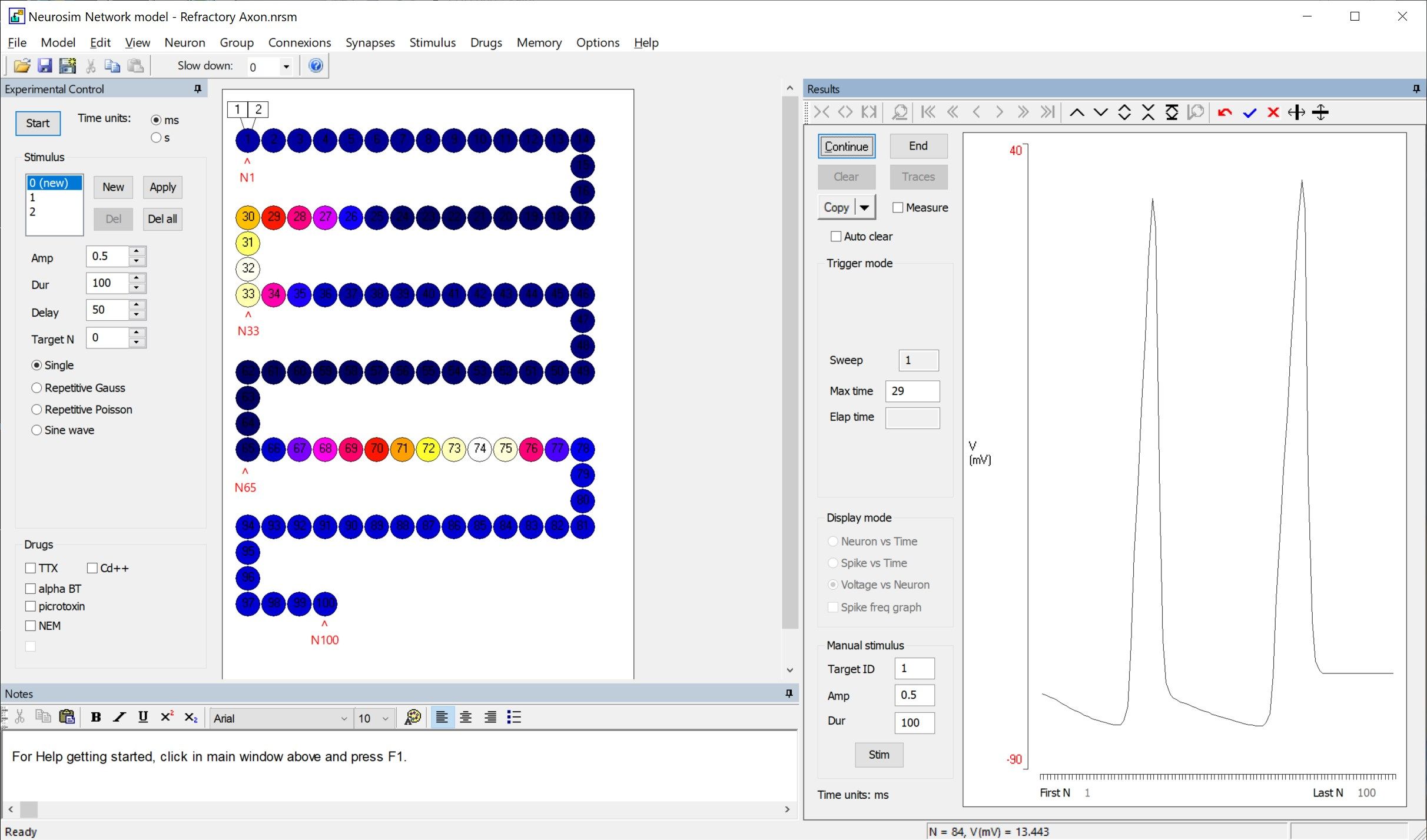
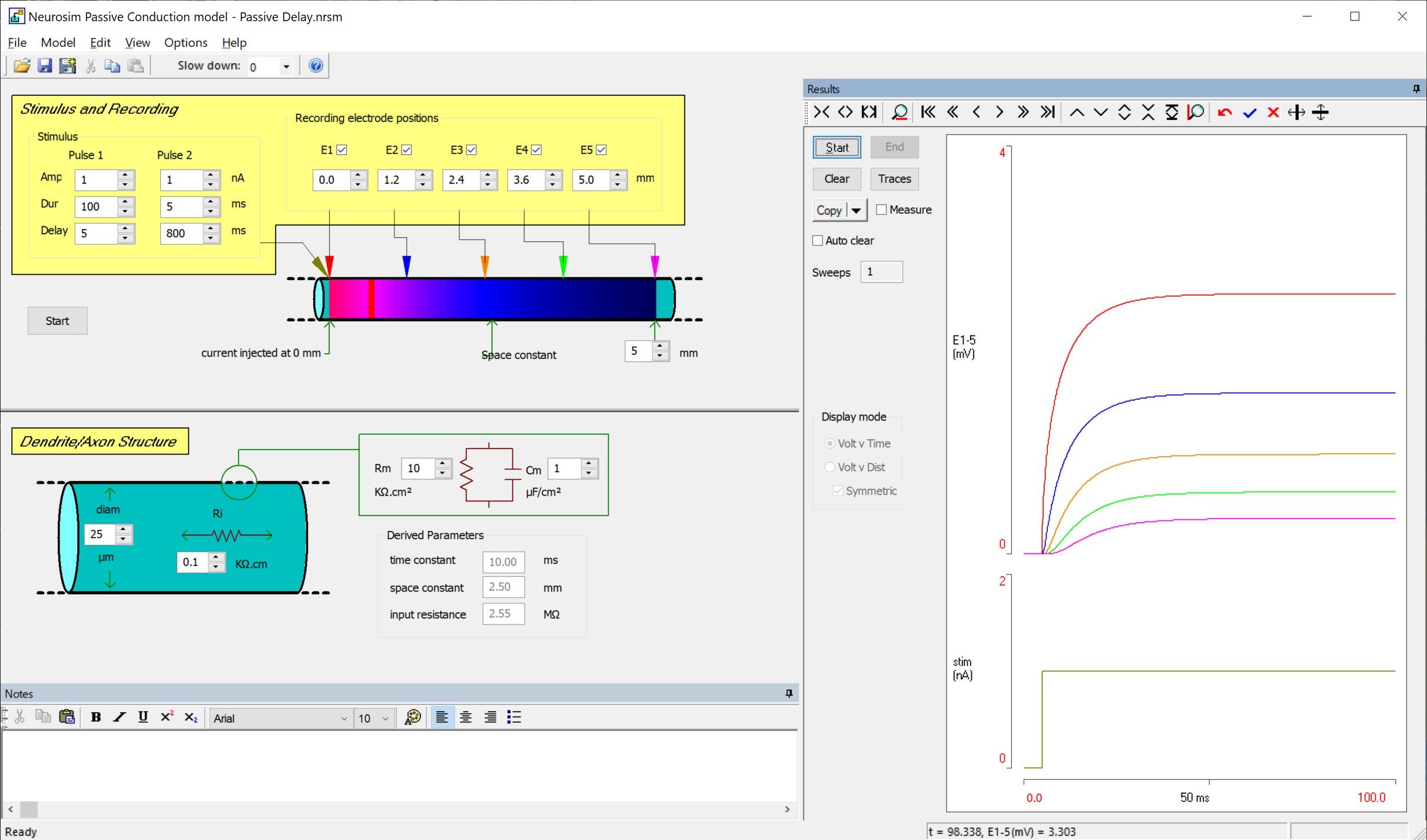
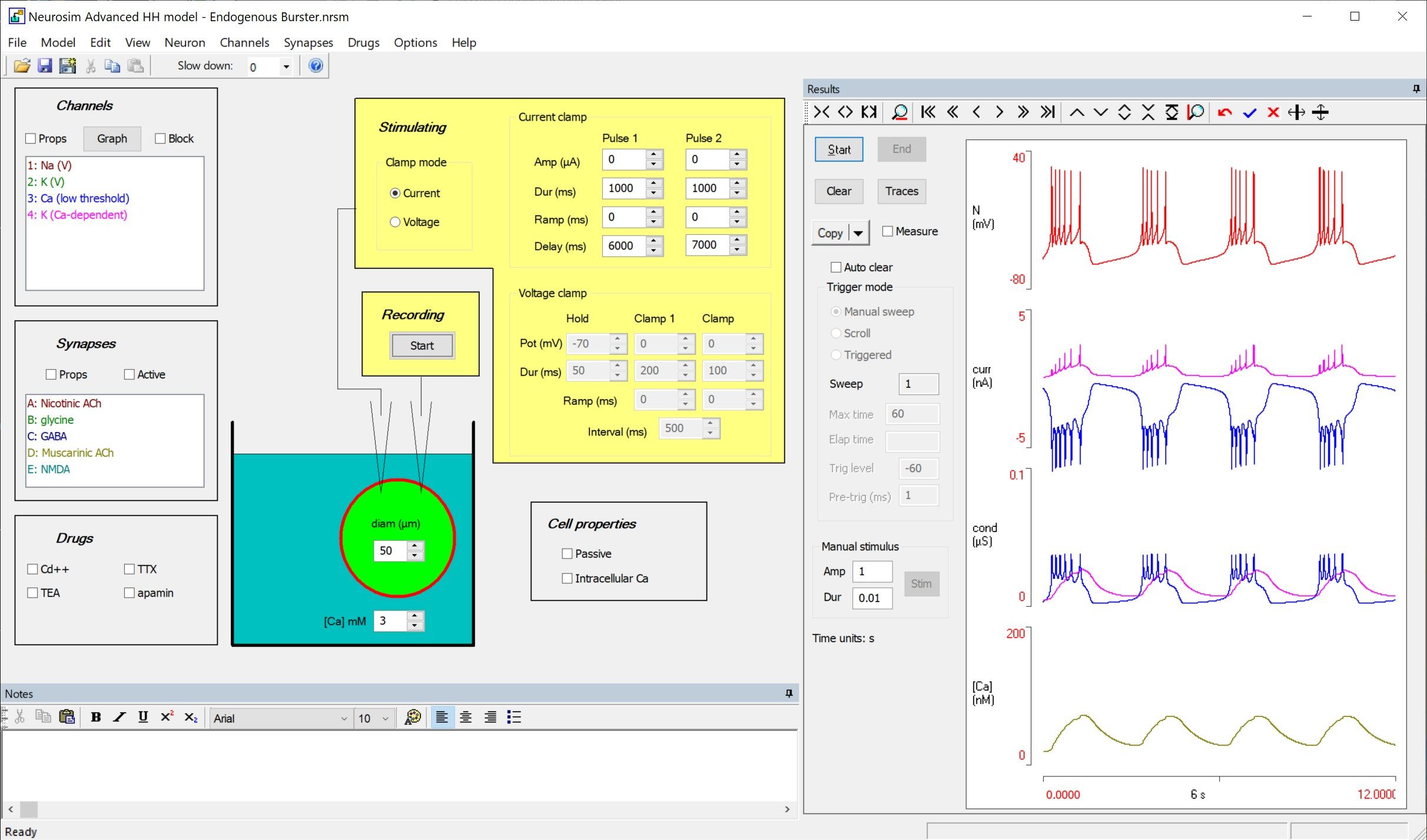
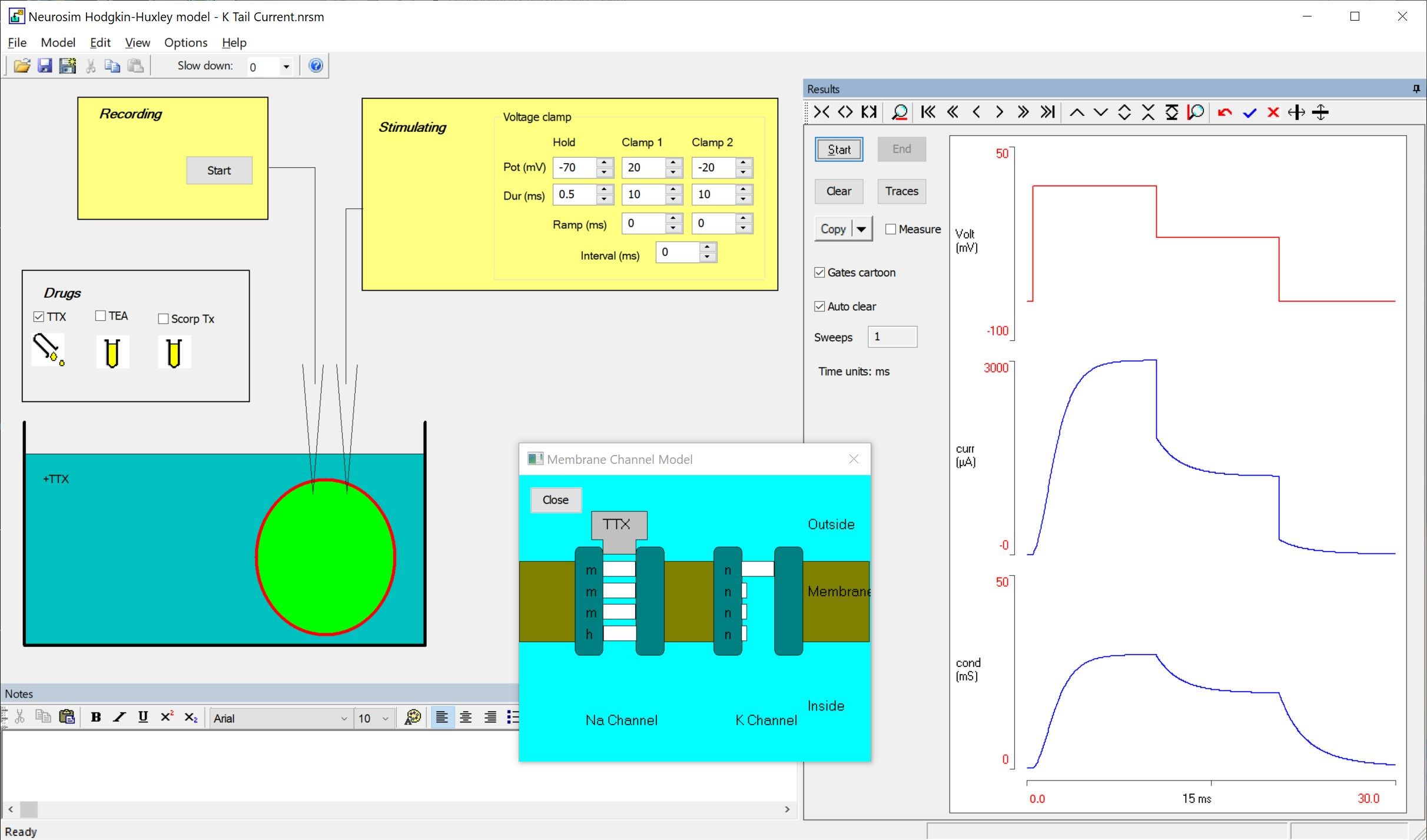
App details
About Neurosim 5
Neurosim simulates neural activity at the cellular and small systems level. It works “off-the-shelf” and requires no programming or specialist computer know-how. Its specific purpose is to help tutors to teach, and students to understand, cellular neurophysiology. It is aimed at the undergraduate and graduate student level.
A comprehensive set of tutorial exercises with many sample files is provided on the support website.
Value to Students: The key design aim is usability. Most students can dive straight in and concentrate on the science, rather than struggling with managing the program itself. Neurosim can reinforce and consolidate understanding of many of the key principles and concepts that underlie cellular electrophysiology. It is an excellent tool for independent learning after core principles have been established by standard classroom and text book methods.
Neurosim has been used for many years by students in the author’s own classes, and a wealth of teaching experience has gone into making the program as student-friendly and accessible as possible.
Value to Tutors: Neurosim can be a major supplement to, and partial replacement of, real laboratory experiments. It enables students to perform experiments that would be far beyond the capabilities of a normal teaching laboratory. As well as aiding the understanding of fundamental principles, Neurosim can give valuable practice in designing experiments, and interpreting and analysing realistic neurophysiological data. It can also be used as a visual aid during classroom teaching, to present dynamical events that cannot be adequately illustrated with conventional techniques.
Neurosim has a highly configurable user interface, so tutors can set up experiments that only expose students to details relevant for a particular learning objective. Tutors can also hide and password-protect specific parameters, so students can be set the challenge of discovering them by experiment.
Neurosim contains seven modules:
HODGKIN-HUXLEY is a direct implementation of the original Hodgkin-Huxley model of a nerve impulse. It operates in either current clamp or voltage clamp mode, each with square or ramp waveform and user-defined amplitude and timing. A wide range of phenomena can be simulated, including refractory period, threshold accommodation, voltage clamp tail currents, single channel patch clamp conductances and many others. Various drugs can be applied, and the temperature and ionic concentrations can be varied.
GOLDMAN simulates the Goldman-Hodgkin-Katz constant field equation. This allows students to explore the relationship between ionic concentrations and equilibrium potentials, and relative ionic permeability and the membrane potential. It explicitly calculates the Nernst equations and Goldman equations for a range of ionic parameters.
MEMBRANE PATCH simulates the kinetic properties of single ion channels. Three simple models are supplied: a two-state open/shut channel; a 3-state agonist-activated channel (shut/unbound, shut/bound, open/bound); and a 3-state shut, open, blocked channel. The program can also model a channel with up to 5 states with user-defined transition rate constants. Open-time and shut-time histograms can be displayed, with multi-exponential curves superimposed. A maximum-likelihood routine can optimize curve fit parameters.
PASSIVE CONDUCTION simulates the non-spiking conduction properties (the cable properties) of an “ideal” axon (infinite length and uniform diameter). The user specifies the membrane characteristics (membrane resistance, axoplasmic resistance and membrane capacitance) and diameter, and the simulation shows how the voltage varies over time and distance in response to current pulses. The membrane potential can be displayed either as a graph of voltage against time at specified positions, or voltage against position over a specified length of axon.
NETWORK allows the user to construct arbitrary circuits of neurons interconnected by synapses. Neurons can implement an integrate-and-fire or Hodgkin-Huxley formalism, or a mixture of the two. Compartmental models can be generated by linking neurons (compartments) with electrical synapses. Many different types of synapses can be defined, including chemical synapses with different reversal potentials, synaptic strengths and facilitation properties, and electrical synapses with different rectification properties. Chemical synapses can be voltage dependent, or have Hebbian properties. A very wide range of circuit phenomena to be demonstrated, including endogenous and network oscillators, lateral inhibition in sensory systems, and many others.
ADVANCED HH is a do-it-yourself single-compartment neuron model in which both voltage-dependent and synaptic conductances can be incorporated. It is intended for investigating more complex cellular systems than that of the standard HH model. Up to nine voltage-dependent channel types can be included, each with user-defined maximum conductance and equilibrium potential, and with activation and inactivation kinetics defined using a built-in equation editor. Intracellular calcium concentration fluctuations can be simulated, and any channel can be made calcium dependent. Neurons designed in this model can be imported into the Network model and used within circuits.
WILSON-COWAN is a firing-rate model that simulates a large but spatially-localized population of neurons containing an interacting mix of excitatory and inhibitory neurons. Individual neurons are not modelled, but the overall activity is determined by setting general properties such as threshold, threshold variability, and connection strengths. Such a population can generate a variety of outputs, including bi-stable, multi-stable and oscillatory. Multiple W-C populations can be coupled together to produce complex patterns of output.
Key features
-
Provides realistic simulations for cellular and small-system electrophysiology.
-
Easy to use, no programming knowledge required.
-
Intuitive, configurable interface.
-
Enables simulations appropriate for multiple levels, from 1st year college to advanced post-graduate.
-
Can be used to reinforce core concepts, and to set challenges and puzzles that give users experience in experimental design, data analysis, and problem solving.
-
Can simulate at multiple levels, including passive properties, individual ion channels, individual neurons, compartmental models of neurons and networks of neurons.
-
Neurons can be integrate-and-fire and/or have full Hodgkin-Huxley formalism containing multiple ion channels with user-specified kinetics.
-
Intracellular calcium concentration and calcium-dependent channels can be modelled.
-
Any number of neurons can be linked with any number of synaptic connections to form a network circuit.
-
Synapses can be chemical or electrical.
-
Chemical synapses have fully configurable properties including conductance, equilibrium potential, facilitation, Hebbian properties and voltage-dependency.
-
Electrical synapses can be non-rectifying or rectifying.
-
Designed for teaching, but also a useful research-level ideas factory.